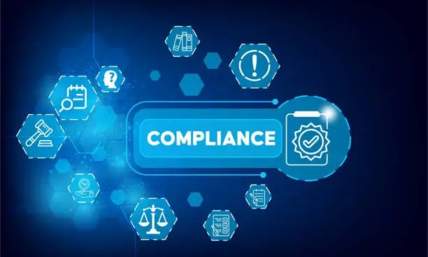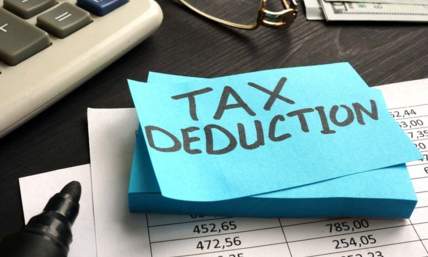Are Stimulus Checks Just A Tax Refund Advance? Plus Other Common Myths
Worried about getting your $1,200 COVID-19 stimulus check from the government? You can ease your concerns by understanding the difference between facts and myths about stimulus checks. Via the Internet, you’ll find a lot of information about what’s going on in the world. However, you’ll also find a lot of misinformation.
This means it’s sometimes hard to tell fact from fiction when you learn things online, such as whether the stimulus check is a tax refund advance. The following will clear up some of the mystery surrounding the coming stimulus checks. Read on to learn what’s true about the American stimulus payments and what’s not.
Also read: Income Tax Working In Another State
Myth: The Stimulus Check Is A Tax Refund Advance
To begin with, you will not have to pay back your IRS stimulus tax refunds. The stimulus payment isn’t an advance on your tax return. For most people, the government bases the stimulus payment on their adjusted gross income for 2018 and 2019. Technically, the payment is an advanced tax credit that offsets your tax liability for 2020. It’s tax-free government aid.
You won’t have to pay any of it back, even if the government overpaid you. The stimulus check is a one-time payment that officials hope will help with the financial strain caused by the coronavirus pandemic. Still, you won’t have to repay the money. Because it is a refundable tax credit, it will reduce your 2020 tax liability dollar-for-dollar.
It’s hard to know what you’ll owe the government until after you’re done filing your taxes. For this reason, some people may receive more funds than they should. Nevertheless, the government won’t require them to make up the difference in 2020.
Also read: Tax Refund Chart
Fact: Sole Proprietors Can Apply For A Different Loan For Up To 2 1/2 Times Their Regular Pay
The government, in conjunction with the Small Business Administration, is also trying to help businesses. After all, most people work for a living, so companies need to continue making money so that they can pay employees. Because of this, the government enacted the Enhanced Debt Relief program. The federal government also endorsed the more well-known Paycheck Protection Program.
Lawmakers designed the program to give employers incentives for keeping workers on staff. The SBA will forgive the loan if employers use it for employee payroll over eight weeks. Businesses must use the money for payroll, rent, mortgage interest, or utilities. You can apply for a Paycheck Protection Program loan through the SBA or a participating federally insured lender.
Lenders started processing loans for businesses with employees on April 3, 2020. Legislators plan to make the Paycheck Protection Program available up to June 30, 2020. Any small business can apply for the program. Nonprofit organizations, veteran organizations, and Tribal business interests can also apply for the program. Sole proprietors were allowed to start applying on April 10, 2020.
Unfortunately, the program’s already out of money. If you applied before May 11th, you’re at the head of the line. If you applied after the 11th, you have a long wait ahead of you—and that’s if Congress approves more funds. If you own a business, it’s worth your time to apply for the loan. You can use the handy paystub creator online to figure out information about you or your employees’ salaries.
Also read: Are GoFundMe Donations Tax Deductible?
Myth: Everybody’s Getting A Stimulus Check
Not everyone in the United States will receive a stimulus check. However, most people will. There are specific criteria that you must meet to receive a stimulus check. If you’re a US citizen or permanent resident, you’re in luck. You must also have filed income tax in 2018 and 2019. If you receive Social Security for retirement or disability, you qualify for the payment.
Individuals who receive survivor benefits or Railroad Retirement benefits will also receive the payment. If you meet these requirements, you don’t automatically get a check. You must also have an adjusted gross income that doesn’t cross a specific threshold. For single filers, the threshold is $75,000. If you file as head of household, you cannot make more than $112,500 a year to receive payment.
Couples cannot make more than $150,000 per year. They’ll receive $2,400 if they don’t make more than this amount. Also, they may qualify for $500 for each dependent that they claim under the age of 17.
Also read: A Full Guide on How to Calculate Income Tax On A Pay Check
Myth Vs Fact:
You Have To Apply For A Stimulus Check, And It’s Going To Take A Long Time To Get It
You do not have to apply to receive a stimulus check. If you file a 2018 or 2019 tax return, the IRS will use your direct deposit information to send the money to you automatically. If you didn’t receive your income tax return by direct deposit, you can log on to the IRS website and provide your direct deposit information now.
Once you register your bank account with the IRS, you should receive your money in a few weeks. If you have, good news! You can learn more about its status here. Most people should have received the stimulus check on April 15 if they have already given the IRS their direct deposit information. If you receive your income tax refund by paper check, you might have to wait months to receive payment.
Why You Need To Stay In The Know About Money
Now you know that the stimulus check isn’t a tax refund advance. You also learned about a cool tool that you can use to do employee payroll. It’s important to know the facts about this government aid and not fall prey to misinformation. The strength of an economy depends on the financial literacy of individuals.
When people know more about money, they make sound decisions about their personal finances and lead more secure lives. Start learning more about personal finance and take care of your paystub need right here right now!















